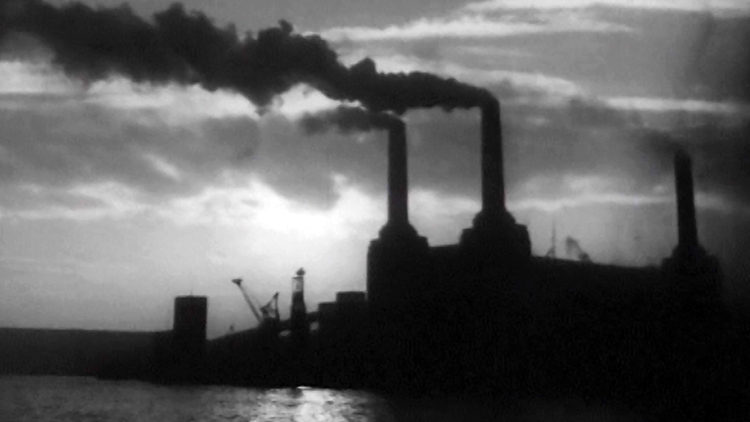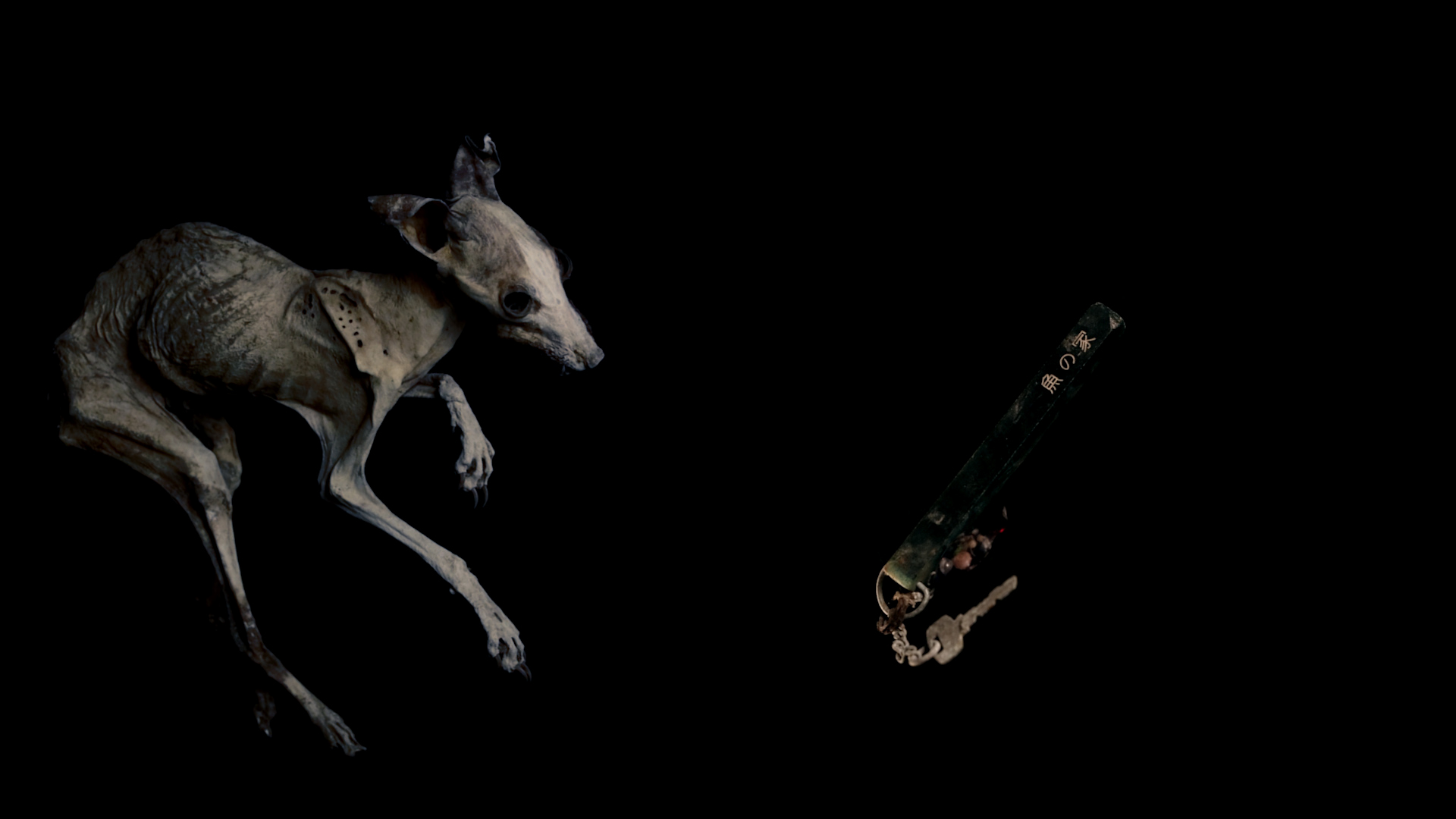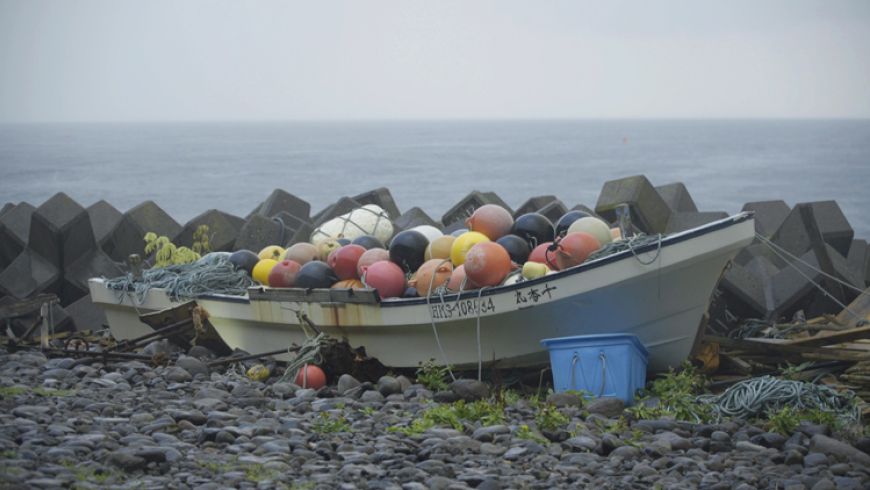A Half-Open Door
Laurence Scott
Writer Laurence Scott considers temporality in the 21st century, looking at the work of Alice May Williams and Karen Kramer.
Watch Alice May Williams' Dream City – More Better Sooner in full here
Watch Karen Kramer's The Eye That Articulates Belongs on Land in full here
One day, perhaps some time around March 2014, I remember not understanding an acronym that had suddenly sprouted in my Facebook newsfeed. The letters TBT were appearing next to milky photographs, the unknowing filter of my childhood. Throwback Thursdays — the weekly posting of old family snaps — revive the past in the visibly moving present of a social media timeline. The practice is like looking through a chink in a door, catching a sliver of another room full of former selves, before the demands of the moment edge the door shut again. And on we go. But Facebook appears especially interested in coding the architecture of our nostalgia. It continually nudges us to invoke the shades of school chums, and even to think of our pasts through its involvement with them. ‘Here’s what you were posting 7 years ago today, Laurence!’ Facebook’s jaunty, disembodied intelligence volunteers on my timeline, displaying a beaming portrait of a friendship that has long since withered. It borrows from its own stash of digitised time to underscore its appointment as our official chronicler. While this borrowing is brazen and explicit, we live with rumours that, behind-the-scenes, it is not borrowing but selling that keeps the upgrades and free apps coming. Our online pasts, it seems, are a commodity, with social media companies selling our browsing histories in vast, secret auctions occurring on the other side of the circuitry. The magic of digitisation is that the data of our pasts can be borrowed without being taken; our information can be simultaneously sold off and stored.
These years of the early millennium are characterised by a strange, doubled relationship to time. A generation lasts as long as a smartphone. Young people feel wizened when thinking of a sibling two years their junior and all their mysterious new apps and text platforms. If you cut into the rock of our period, you will see how digital technologies are making thin seams of the strata. And yet while technological progress speeds into the future, the same technologies tether us ever more tightly to our posterity. The retrievability of our digitised lives, coupled with the many ways in which online platforms urge us to document and review and remember, has us caught in what the writer Fran Lebowitz calls a ‘race to the past’. Perhaps this feeling of doubleness is simply in the nature of living consciously, as we all do, in time.
The Roman god Janus, famous for having two faces positioned in opposite directions, is celebrated as the deity of doorways and thresholds, but he was also described as temporis auctor, the author of time. Thus for the Romans time was a double-faced idea, at once concerned with past and future.
However, we’re interested here not simply in time, but in the idea of borrowed time. This curious phrase invokes time as a thing to be leant out; the ultimate, neighbourly cup of sugar. Of course, nestled inside the very notion of borrowing is the less pleasant idea of indebtedness. In Payback, Margaret Atwood’s cultural history of debt, we are told that ‘debtor and creditor are two sides of a single entity, one cannot exist without the other’. Both borrowing and time, then, can be conceived as double-faced. And indeed, we think of them in terms of the other. ‘Every debt,’ Atwood writes, ‘comes with a date’, the mutually appointed moment when the borrower must pay back. Our justice system agrees that prisoners should pay for their crimes with time, while the figure of Death, as the ultimate debt-collector and product of time’s steady work, is often depicted carrying an hourglass. In this sense, to borrow is to set the clock ticking, and therefore borrowing time contains its own kind of doubleness. How do you set a time for payback, when the thing borrowed is time itself?
Our literature is keen to emphasise that those who borrow time rarely fare well in the long run. Wanderers who dally even briefly in the other-time of fairyland return to find their loved ones dead and gone. Dorian Gray is the nineteenth century’s poster boy for the perils of unnaturally extending your youth. Atwood notes that payback for such temporal debts often occurs at threshold or ‘hinge moments’, such as midnight, the liminal time between one day and the next, or the seasonal hinges of the solstices. These threshold times are also threshold spaces, signalling an opening between our world and others beyond it. In Celtic fairy lore, for example, solstices, as well as the crepuscular hours of the day, are when the boundaries between human and fairy planes are at their thinnest. Thus, the price for borrowing time can take the form of a visit from the beyond. Faust is our time-borrower par excellence, since he is always asking it favours (‘speed up!’, ‘halt!’). His debts to time are collected at the hinge of midnight, when the doors to hell swing open. As Atwood points out, it is ‘the hour during which Faust is torn apart by demons’.
An open door returns us to our two-faced deity. The entranceway to Janus’s temple in Rome was imbued with symbolic power. The temple doors standing open indicated a time of war, since the god had passed through them into the world in order to aid the Roman cause. During times of peace, the doors remained closed.
*
Alice May Williams’ work, Dream City — More, Better, Sooner, explores how time is pushing open the door of the Battersea Power Station. A luxury redevelopment project is the latest face of this stretch of the Thames that, as Williams’ work shows us, has always been a particularly vivid site of temporal flux. On the 2013 Open Day Weekend in London, during which many historic homes and institutions were made freely accessible to the public, I visited Battersea. The queues ran west along the river and up into the nearby streets, with thousands of people waiting several hours for this rare and temporary chance to see inside. At the threshold of the ruin, the developers had set up a sort of showroom with plans and posters of the restoration project. The power station’s reopening as a business and leisure complex is a venture in borrowed time. Investors speculate (a verb that looks to the future) on the nostalgia of the marketplace. A potent image of this process is the replacement of the ‘iconic’ chimney stacks with reinforced replicas, so that the future of the silhouette is also its past.
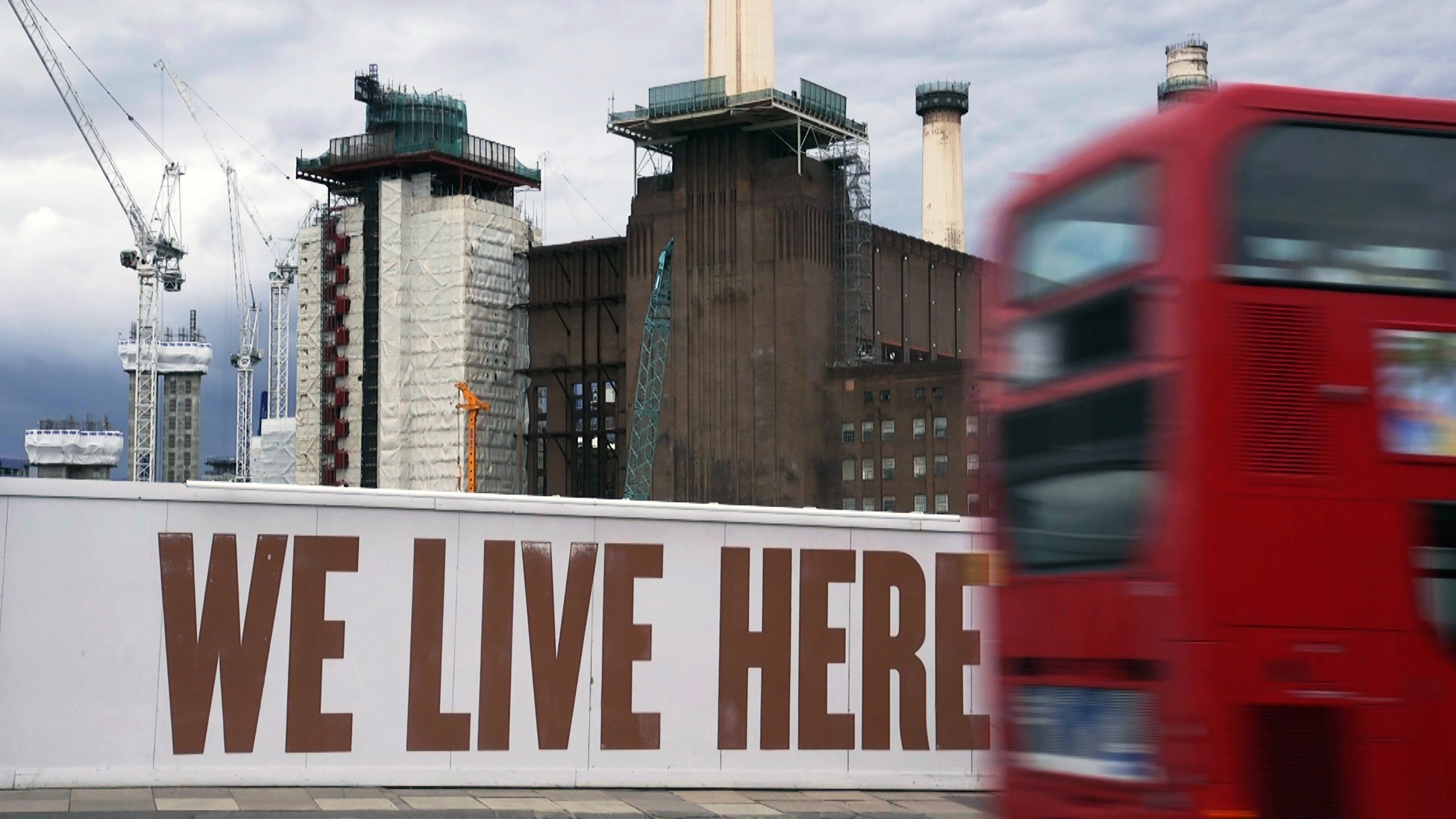
The official development website announces that ‘Battersea Power Station is solid history. This giant at the river’s edge encapsulates an era.’ Note how this type of commercial time-borrowing tends to put stress on the language it uses to justify itself, since a mere paragraph later the opposite is proposed: ‘it feels strikingly contemporary. It is a true original and true originals never age.’ On the one hand we are offered an image of fossilised time, with the station encasing, as in amber, a bygone period’s spirit of technical innovation. On the other, Battersea is glorified as being beyond time: ageless, unchanging, and representing, as is the fate of all true originals, nothing but itself.
Here we find the uneasiness of any corporatised collaboration between past and future, for each must turn the other cheek to their collaborator’s limitations. The past is embarrassed by the inevitable thinness of the future, its untested nature and its reliance on potential rather than substance. Whereas the future is embarrassed by the past’s fixedness, its inability to progress beyond its own time. That is to say, businesspeople whose business involves commodifying our nostalgia are partially embarrassed by both past and future. (As I write, my bathroom sits half-covered in new plaster, the carcass of an old toilet blocks the front path, and boxed in the spare bedroom there is a fresh, gleaming sink in the Edwardian style. Across the box the slogan reads: Yesterday’s designs, today’s technology). The nostalgia merchants’ challenge is to reconcile consumers’ demands for innovation with their soft spot for history. If they borrow from the past the payback will be the faint stench of obsoleteness, to which they apply business speak in hopeful spritzes: ‘improvement’, ‘vision’, ‘new horizons’.
The paradoxes produced by this sort of time-borrowing infect the broader Battersea venture. All bets for consistent meaning seem to be off. ‘We don’t do shoe-box apartments…we don’t do boring office spaces…’ a short promo-film on the developer’s website assures us, culminating in the tagline: ‘We don’t do ordinary’. Just a few tabs and clicks away is the BPS Community Charter, a PDF whose first page reads in bold print: ‘Building a real place, brick by brick’. In this place of extraordinary realness, the very notion of public space is contorted. The mercurial website promises ‘18 new acres’ of the stuff, but its critics question how widely public this privatised venture could possibly be. Janus raises his heads here once again, for the opening of the temple doors, recall, is the end of peace. The reopening of Battersea, likewise, is for some an act of aggression, heralding the displacement of the existing community. Williams captures in her film the words written across the construction barriers: ‘WE LIVE HERE’. But to whom does this ‘we’ belong?
Given the tensions of our period’s particular brand of elegiac futurism, it isn’t surprising that the notion of mindfulness is finding traction. For mindfulness is an attempt to require nothing from time, neither the future’s excitements nor the past’s consolations. A Janus-faced outlook is inherently at odds with this meditative code, since Janus always thinks of two things, whereas the mindful must think of just one: the present moment, that slice of time where the backs of Janus’s heads touch. Moreover, to remember the present is to remember a place of transit. It begins, Williams’ narrator reminds us, ‘by bringing attention to the sensations of the breath, entering and leaving the body.’ Our breath, ebbing and flowing as a tide, is a creature of thresholds.
*
When Battersea was a functional power station it was a furnace of burning time. Nothing is more ‘solid history’ than coal, a ubiquitous, unoriginal fossil fuel produced with geological patience from submerged organic matter. Coal is mined time, and the payback arrives in clouds of black smoke. The past lays traps for the debtor, a concept that Karen Kramer’s work, The Eye That Articulates Belongs on Land, in part reveals. Almost five years after the Fukushima reactor was damaged, the plant and its surroundings continue to be a locus point of warped time. That day in March 2011 stamps its presence on each new day that follows it. The great fear after the tsunami hit was that the reactor would breach. Radioactivity, that dread word of nuclear disaster, the thing that rushes through the rupture, is measured in temporal terms. The half-life of a substance is the length of time taken for half the nuclei in a sample of atoms to decay, a process that emits radiation. The shorter the half-life, the more unstable and radioactive the material. Half-life is its own queerly double concept, at once a diminishing and a strengthening; the atom’s payback is the radiation’s interest. Deleterious levels of radiation accelerate and pervert time’s effects on organic matter, but perhaps more generally the Fukushima site is a symbol of the past’s effects on the present and future. That moment of suspected rupture can still be felt in the air around Fukushima, in the same way that we sense, in our own lives, that some former breach or calamity or misstep is invisibly shaping the unfolding present.
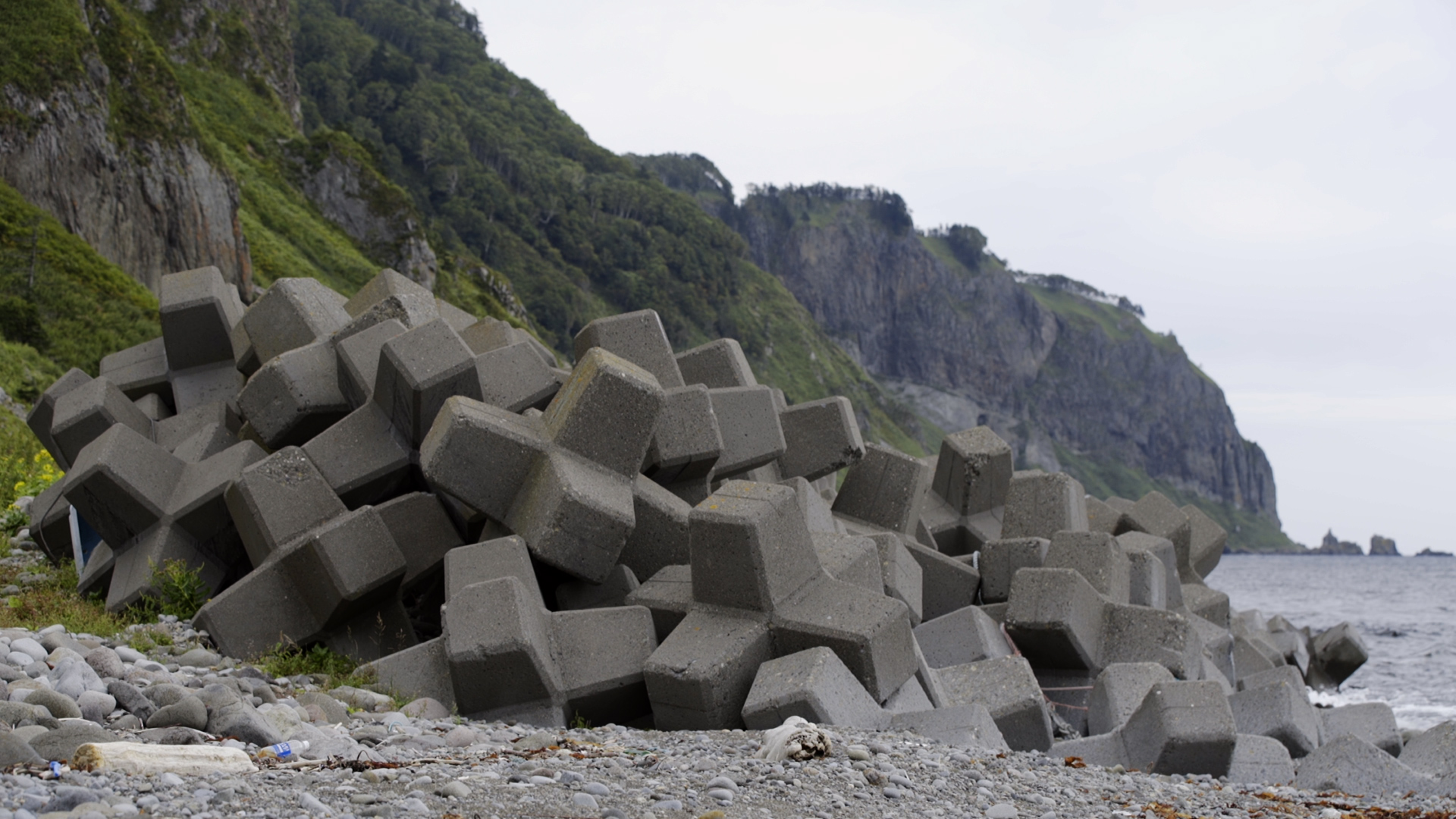
However, Kramer is concerned not simply with toxicity and decay, but also with capturing the dynamism of the region’s liminality. Her work begins with a threshold place of salt and air ‘and an imaginary line drawn between the two’. She returns to the image of the fox, both alive and dead. In one haunting sequence an emaciated, curled fox, hairless and terrifyingly pallid, struggles for breath. But in another, a fine-pelted fox surveils the shoreline. These contrasting forms suggest the creature’s uncanny posture —both animate and inert — and the new modes of knowledge that this status enables.
In Japanese mythology, the fox occupies the realms of both the living and the divine. It is the messenger of the androgynous Buddhist deity Inari, the rice-carrier, who was initially worshipped as the god of nourishment but whose cult later became associated with finance and commercial wealth. Shrines to Inari contain small openings in the walls through which the messenger fox may freely come and go. I am reminded of Ted Hughes, who, as a struggling undergraduate, dreamt of a fox-man standing beside his university desk and begging him to abandon his literary studies because it was ‘killing us’. In the dream, the fox was blackened and bloodied, having ‘come out of a furnace’. The poem, ‘The Thought-Fox’, inspired by this dream, gives shape to late-night moments of creativity when ‘Something else is alive / Beside the clock’s loneliness’ and the fox of inspiration ‘enters the dark hole of the head’.
In Kramer’s work Fukushima becomes a study of breaches, with the messenger-fox crossing thresholds, living its life in two halves. The site speaks to the dangers and power of rupturing, the violence of the opening, but also the opportunity of exchange at the threshold. In Kramer’s images of abandonment — the debris of crockery in empty rooms, and the desolate storefronts — we see not a borrowing of more time but an accelerating of its effects. Time is a burrowing creature. In ‘As I Walked Out One Evening’, W.H. Auden poetically imagines time as a sublime force that works its corrosive way into our lives through breaches in the mundane: ‘The glacier knocks in the cupboard, / The desert sighs in the bed, / And the crack in the tea-cup opens / A lane to the land of the dead.’ Time flows away through open doorways. But at these thresholds between worlds and between times, the fox reminds us of the creative possibilities of the liminal position, the coming and going of the tide at the shore. A breach, after all, is an Old-English word for the breaking of waves.
*
Considered together, these two power stations form their own two-faced image of time. In Battersea the future smiles at the past, while at Fukushima the past howls out into the future. One tries to contain time inside its restored brickwork, speaking widely of an opening that is in fact an enclosure. The other is a breached space, its days measured in halves. The shops, full of wares, are closed. At Fukushima the past is a kind of wildness. It cannot be domesticated by simulation, or rendered inert by nostalgia, in the way that the Battersea project seeks to embalm an inactive, decontaminated version of 1930s gung-ho industry. In both places time’s door stands ajar. An act of welcome, a sign of war.
–––
Laurence Scott is a lecturer in English and Creative Writing. He is the author of The Four-Dimensional Human: Ways of Being in the Digital World (William Heinemann, 2015), which was shortlisted for the Samuel Johnson Prize 2015. In 2011 he was named a ‘New Generation Thinker’ by the Arts and Humanities Research Council and the BBC, and has since written and presented programmes for Radio 3’s The Essay and The Sunday Feature. His essays and criticism have appeared in The Guardian, The Financial Times and the London Review of Books, among other publications. In 2014 he won the Royal Society of Literature Jerwood Prize for Non-Fiction.
This text was written in response to Karen Kramer's The Eye That Articulates Belongs on Land (2016) and Alice May Williams' Dream City – More, Better, Sooner (2016) which were commissioned as part of the Jerwood/FVU Awards 2016: Borrowed Time, a collaboration between Jerwood Arts and FVU. In association with CCA: Centre for Contemporary Arts, Glasgow and University of East London. FVU is supported by Arts Council England.
